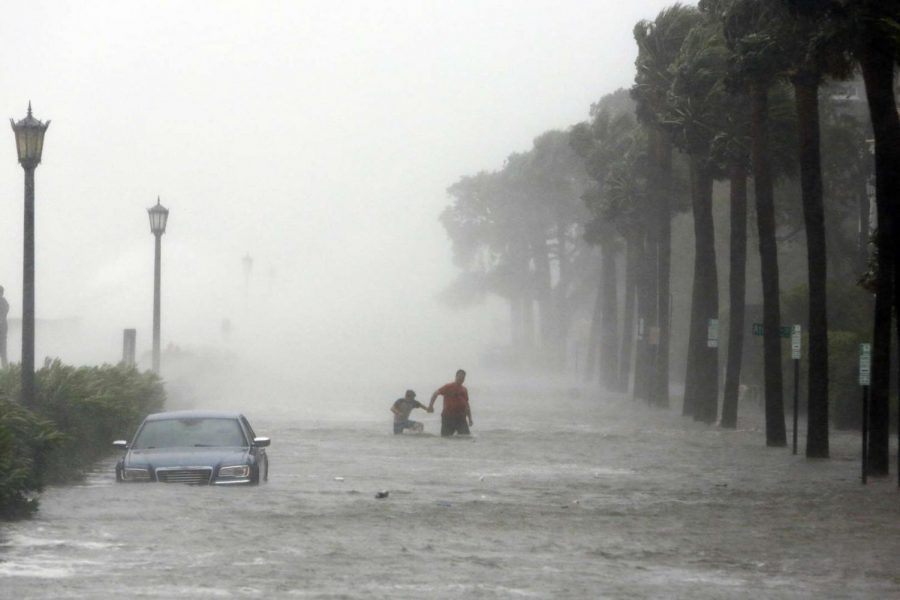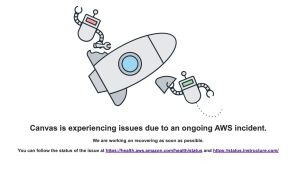Record-breaking hurricanes, tornadoes, and fires wreak havoc in U.S. and around the world
Disasters are attributed to climate change
Hurricane Irma hit South Carolina, as well as the U.S. Virgin Islands, Florida, Georgia, and North Carolina hard. | AP
October 20, 2017
The year has not even ended, and climatologists have forecast that the natural disasters occurring in 2017 are on track to shatter records.
For the first nine months of 2017, the United States alone has endured 15 disasters, each costing $1 billion or more and collectively claiming 323 lives.
They were all linked to weather and climate, according to data from the National Oceanic and Atmospheric Association.
The 1980–2016 annual average of “billion-dollar disasters” is 5.5 disasters. The annual average for the past 5 years is 11 disasters. 2011 currently holds the record with 16 billion-dollar disasters.
With 15 billion-dollar disasters, 2017 is approaching that record-setting year. The NOAA anticipates that the weather shows no sign of slowing down.
Hurricanes Harvey, Irma, Maria, along with numerous others, are 15 named cyclones. 9 have become hurricanes, and have left insurmountable destruction in their wake. The numbers are predicted to only grow.
Maria, a category 4 hurricane, has brought devastation to southeast Puerto Rico. Irma, category 4-5, struck the U.S. Virgin Islands and the Florida Keys. Harvey, category 4, inundated Houston, Texas with intense flooding over the course of seven days. Currently, Hurricane Ophelia is affecting Great Britain.
The hurricane season ends November 30. In the time between now and then, the NOAA has predicted that 2017 will break the 2005 record for the costliest hurricane season.
Hurricanes are not the only disasters wreaking havoc on both local communities and national economies.
In the western United States, wildfires caused by droughts have burned 8.4 million acres of land and hundreds of homes, surpassing the 10-year annual average of 5.9 million acres. These fires have been the deadliest in California state history. As of Tuesday, they have amassed a death toll of 40.
North Dakota, South Dakota, and Montana have been experiencing a severe drought since this fall.
The drought has damaged crops, undermined agriculture, and has significantly contributed to the rampant wildfires. Overall, the drought has cost the U.S. $2.5 billion.
The other 10 weather occurrences surpassing the billion-dollar mark appeared as severe weather in the Midwest.
There were over a dozen tornadoes in Iowa, as well as hail and severe wind storms throughout the country in June. Missouri and Arkansas experienced severe flooding in May, and a freeze severely damaged early-blooming fruit crops in the southeast in March.
A tornado outbreak ravaged the country in both March and January. California experienced flooding in February.
North America is not the only continent to experience such levels of disaster.
Although they have not received the same media coverage, floods have killed over 1,200 people in Southeast Asia. 41 million have been affected by them since June, according to the International Federation of Red Cross.
In East Africa, up to 400,000 people have been displaced by natural hazards including floods, droughts and landslides. What more, the lack of environmental resources, poor land-use planning, poverty, and water pollution make people in these areas especially vulnerable.
Although the number of these disasters keeps rising, far fewer people are dying as a consequence.
50 years ago, 200,000 people died annually as a result of natural disasters. That figure has been dramatically reduced, thanks to safety measures such as improved buildings and flood-prevention schemes.
It is currently difficult for climate scientists to discern exactly what has caused each of these climate occurrences.
However, climate change and anthropogenic causes have played a significant role, and will continue to cause natural disasters in the coming years.
Experts are currently searching for more precise conclusions about what is happening and what needs to be done. There is no denying that they will have an abundance of data to study from in 2017.













































